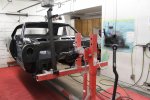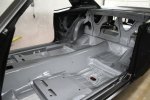bill3337
Member
I'm redoing my '67 Camaro that I've had since new and am an amateur painter, having painted only my other two cars in the past. I've done a lot of metal work on the car, using NOS panels and had the entire body sandblasted inside and out with crushed glass. I've applied two coats of SPI epoxy primer over the bare metal and will now do some minor skim coat work with Evercoat Rage Ultra (unless there is another better version), followed by another coat (maybe two) of SPI epoxy, then would like to apply final coats of something (epoxy high build, Slick Sand or 2 part urethane high build) for final blocking. I've only recently heard of high build epoxy, but assume it might be tougher to block than Slick Sand? I assume Slick Sand or some other polyester primer is preferred over 2 part high build?







